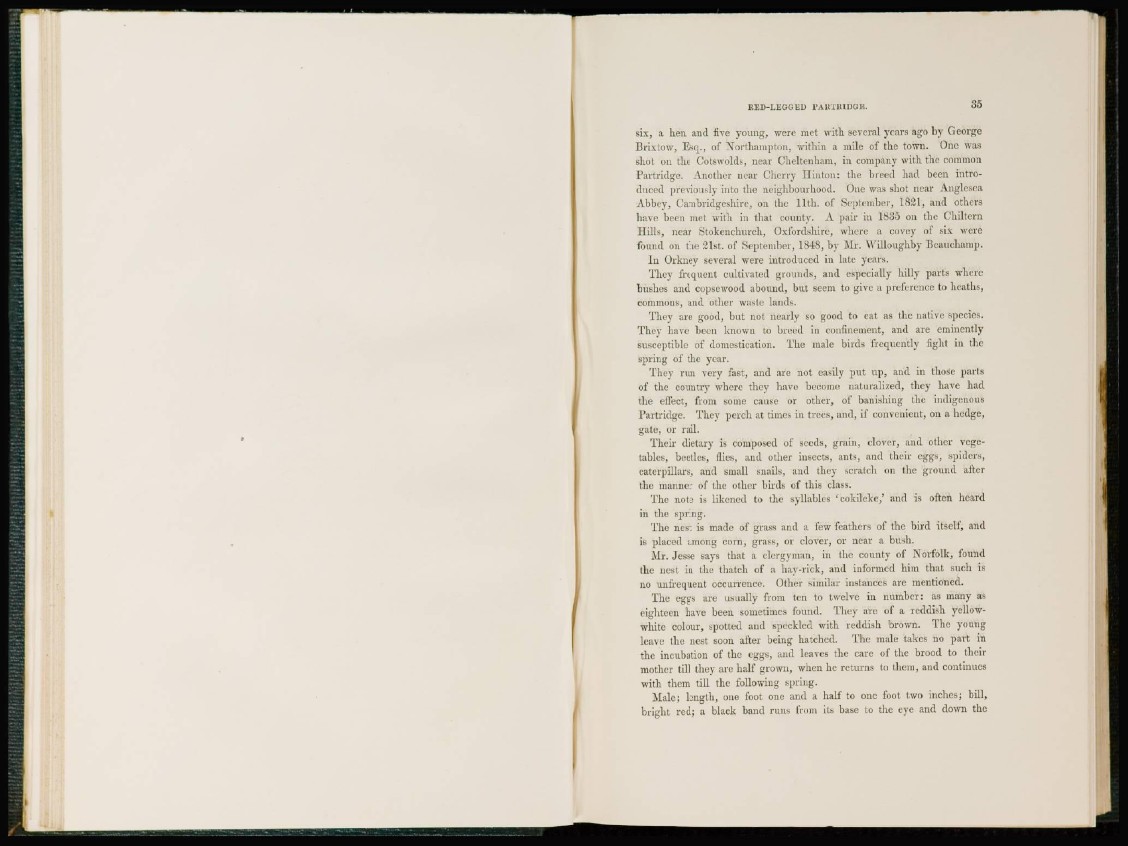
six, a hen and five young, were met with several years ago by George
Brixtow, Esq., of Northampton, within a mile of the town. One was
shot on the Cotswolds, near Cheltenham, in company with the common
Partridge. Another near Cherry 11 niton: the breed had been introduced
previously into the neighbourhood. One was shot near Anglesea
Abbey, Cambridgeshire, on the 11th. of September, 1821, and others
ha.ve been met with in that county. A pair in 1835 on the Chiltern
Hills, near Stokenchurch, Oxfordshire, where a covey of six were
found on the 21st. of September, 1848, b y Mr. Willoughby Beauehamp.
I n Orkney several were introduced in late years.
They frequent cultivated grounds, and especially hilly parts where
bushes and copsewood abound, but seem to give a preference to heaths,
commons, and other waste lands.
They are good, but not nearly so good to cat as the native species.
They have been known to breed in confinement, and are eminently
susceptible of domestication. The male birds frequently fight in the
spring of the year.
They run very fast, and are not easily put up, and in those parts
of the country where they have become naturalized, they have had
the effect, from some cause or other, of banishing the indigenous
Partridge. They perch at times in trees, and, if convenient, on a hedge,
gate, or rail.
Their dietary is composed of seeds, grain, clover, and other vegetables,
beetles, flies, and other insects, ants, and their eggs, spiders,
caterpillars, and small snails, and they scratch on the ground after
the manner of the other birds of this class.
The note is likened to the syllables 'cokileke,' and is often heard
in the spring.
The nest is made of grass and a few feathers of the bird itself, and
is placed among corn, grass, or clover, or near a bush.
Mr. Jesse says that a clergyman, in the county of Norfolk, found
the nest in the thatch of a hay-rick, and informed hiin that such is
no unfrequent occurrence. Other similar instances are mentioned.
The eggs arc usually from ten to twelve in number: as many as
eighteen have been sometimes found. They are of a reddish yellowwhite
colour, spotted and speckled with reddish brown. The young
leave the nest soon after being hatched. The male takes no part in
the incubation of the eggs, and leaves the care of the brood to their
mother till they are half grown, when he returns to them, and continues
with them till the following spring.
Male; length, one foot one and a half to one foot two inches; bill,
bright red; a black band runs from its base to the eye and down the